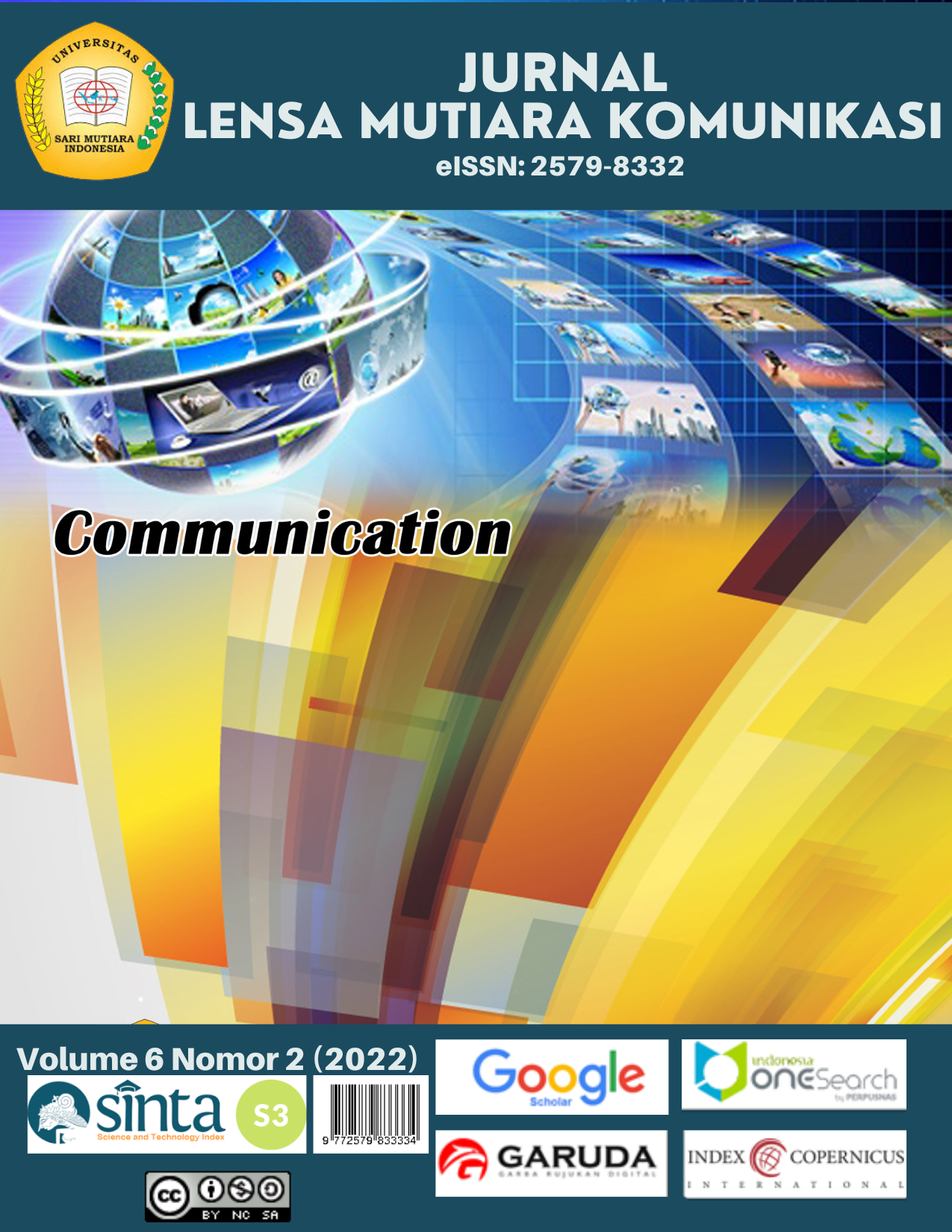Foto Esai Sepak Bola di Museum Olahraga Nasional: Nostalgia dan Komunitas Terbayang
DOI:
https://doi.org/10.51544/jlmk.v6i2.3297Keywords:
identity, nostalgia, imagined community, national sports museum, photo essayAbstract
People engage in nostalgia through museums and their experiences, but little study has been done to link the three. The article places photo essays at the National Sports Museum as a trigger for visitors' memories of events in photos related to self-identity and the nation. It explains the projection of collective identity when the visitors revisit their old memories while consuming the event documentation in the photo essays, and places the photo essays as a medium for imagined community nostalgia. The article argues that the photo essays not only help restore visitors' memories and knowledge but also build personal and collective identities that foster a sense of belonging and inclusion.
Downloads
References
Anderson, B. (2006). Imagined Communities. In VERSO. Verso. https://doi.org/10.2307/j.ctvgs0c0q.10
Arnold, R. (2021). Nationalism and Sport: A Review of the Field. Nationalities Papers, 49(1), 2-11. https://doi.org/10.1017/nps.2020.9
Ashworth, G. J., & Turnbridge, J. E. (2000). The tourist-historic city: retrospect and prospect of managing the heritage city.
Barker, C. (2000). Cultural Studies and Practice. SAGE Publication.
Bergin, T. (2013). Identity and nostalgia in a globalised world: Investigating the international popularity of Midsomer Murders. Crime, Media, Culture, 9(1), 83-99. https://doi.org/10.1177/1741659012451985
Berliner, D. (2016). Anthropology of Nostalgia - Anthropology as Nostalgia. Lapierre 2007, 1-16.
Boym, S. (2001). From Cured Soldiers to Incurable Romantics: Nostalgia and Progress. The Future of Nostalgia, 1-19. https://mycourses.binghamton.edu/courses/1/24201790/groups/_2943_1//_263436_1/Svetlana Boym%2C "From Cured Soldiers to Incurable Romantics-Nostalgia and Progress" .pdf
Branscombe, N. R., & Wann, D. L. (1991). The Positive Social and Self Concept Consequences of Sports Team Identification. Journal of Sport & Social Issues, 15(2), 115-127. https://doi.org/10.1177/019372359101500202
Campbell, G., Smith, L., & Wetherell, M. (2017). Nostalgia and heritage: potentials, mobilisations and effects. International Journal of Heritage Studies, 23(7), 609-611. https://doi.org/10.1080/13527258.2017.1324558
Davis, F. (1979). Yearning For Yesterday: Sociology of Nostalgia. Free Press.
Fairley, S., & Gammon, S. (2005). Something lived, something learned: Nostalgia's expanding role in sport tourism. Sport in Society, 8(2), 182-197. https://doi.org/10.1080/17430430500102002
Frye, M. (2012). Bright futures in Malawi's new dawn: Educational aspirations as assertions of identity. American Journal of Sociology, 117(6), 1565-1624. https://doi.org/10.1086/664542
Gibson, H. J. (1998). Sport Tourism: A Critical Analysis of Research. Sport Management Review, 1(1), 45-76. https://doi.org/10.1016/S1441-3523(98)70099-3
Giulianotti, R. (2002). Supporters, followers, fans, and flaneurs: A Taxonomy of Spectator Identities in Football. Journal of Sport & Social Issues, 26(1), 25-46. https://doi.org/10.1177/0193723502261003
Giulianotti, R., & Robertson, R. (2004). The globalization of football: A study in the glocalization of the "serious life." British Journal of Sociology, 55(4), 545-568. https://doi.org/10.1111/j.1468-4446.2004.00037.x
Greenberg, D. L. (2015). Flashbulb Memories. International Encyclopedia of the Social & Behavioral Sciences: Second Edition, 5, 254-259. https://doi.org/10.1016/B978-0-08-097086-8.51035-6
Hall, S. (1996). Quetion of Cultural Identity. In SAGE Publication (Issue 10). SAGE Publications.
Kana, S. R., Karnadi, D. H., Sn, M., Renaningtyas, L., Ds, M., Petra, U. K., & Siwalankerto, J. (n.d.). Perancangan Buku Foto Esai Perempuan dan Tenun Ikat Kabupaten Rote-Ndao Nusa Tenggara Timur.
Larsen, G., & Patterson, M. (2018). Consumer Identity Projects. The SAGE Handbook of Consumer Culture, February, 194-213. https://doi.org/10.4135/9781473998803.n12
Lee, W. Y. and W. (2021, October 1). Squid Game: The Netflix show adding murder to playground nostalgia. Bbc.Com.
Piliang, Y. A. (1998). Sebuah Dunia yang dilipat, Realitas Kebudayaan menjelang Milenium ketiga dan Matinya Posmoderinsme. Mizan.
Ramshaw, G., & Gammon, S. (2005). More than just nostalgia? Exploring the heritage/sport tourism nexus. Journal of Sport and Tourism, 10(4), 229-241. https://doi.org/10.1080/14775080600805416
Redhead, S. (2009). Hooligan writing and the study of football fan culture: problems and possibilities. Nebula, 6(3), 16-41.
Rodrigues, J. (2020). Encyclopedia of Global Archaeology. Encyclopedia of Global Archaeology, August. https://doi.org/10.1007/978-3-319-51726-1
Senaharjanta, I. L. (2020). Konstruksi Politik Identitas Melalui Visual Fotografi (Studi Analisa Pesan Visual Paul Martin Lester Pada Foto Deklarasi …. Specta: Journal of Photography, Arts, and Media, 4(1), 75-92. http://journal.isi.ac.id/index.php/specta/article/view/3791%0Ahttps://journal.isi.ac.id/index.php/specta/article/download/3791/2385
Setiawan, A. A. (2018). Qualitative Research Methodology. CV Jejak.
Simon, J. (1995). They died with their boots on: The boot camp and the limits of modern penality. Social Justice, 22(2), 25-48. http://www.jstor.org/stable/29766877
Sodaro, A. (2013). Memory, History, and Nostalgia in Berlin's Jewish Museum. International Journal of Politics, Culture and Society, 26(1), 77-91. https://doi.org/10.1007/s10767-013-9139-6
Sontag, S. (2005). On Photography. In RosettaBooks LLC. RosettaBooks LLC.
Timothy, D. J., & Boyd, S. W. (2006). Heritage tourism in the 21st century: Valued traditions and new perspectives. Journal of Heritage Tourism, 1(1), 1-16. https://doi.org/10.1080/17438730608668462
Turner, J. C., & Reynolds, K. J. (2012). Self-categorization theory. Handbook of Theories of Social Psychology, January 2012, 399-417. https://doi.org/10.4135/9781446249222.n46
Downloads
Published
How to Cite
Issue
Section
License
Copyright (c) 2022 JURNAL LENSA MUTIARA KOMUNIKASI

This work is licensed under a Creative Commons Attribution-NonCommercial-ShareAlike 4.0 International License.

















